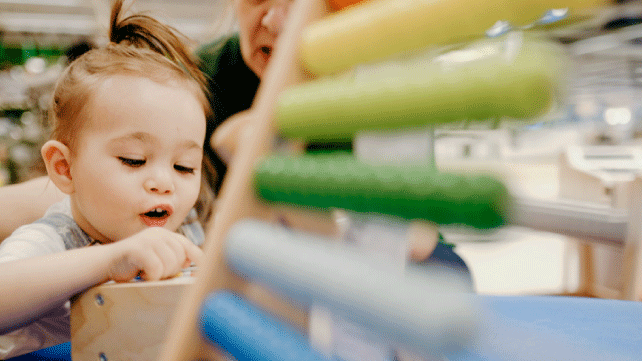A curriculum for funded non-maintained nursery settings
Wriggles and Giggles nursery has built up an excellent reputation over the years with the dedication and professionalism of staff.

Information about the setting
Wriggles and Giggles opened in 2011, the nursery has been established since 1986 on the site of a former telephone exchange on one floor. The nursery has built up an excellent reputation over the years with the dedication and professionalism of staff.
The setting is registered for 42 full-time places for children from birth to eight years and is open from Monday to Friday between 7.30 am and 5.30 pm. It offers a wrap-around service transporting children to and from local primary schools. At the time of the inspection, there were 16 children on roll in the preschool room.
Context and Background to the practice
Practitioners attended Education Achievement Service (EAS) training on the introduction of the four purposes and have been continuously developing their practice over the past five years. This included developing their learning environment by including authentic resources, developing the outdoor area and introducing loose parts to all areas with lots of open-ended play opportunities.
During this time, practitioners continued to develop their planning, observations and approach to learning with an emphasis on learning through play.
Description of nature of strategy or activity identified as effective or innovative practice
In January 2022 the setting began to implement ‘A curriculum for funded non-maintained nursery settings.’ As part of a non-maintained setting, practitioners attended training provided by the regional consortium. All members of staff attended ‘online’ training and staff received copies of the new curriculum to read and familiarise themselves with. After meetings with all room leaders, they discussed how they would move forward with introducing the curriculum into all rooms.
Practitioners looked at the different terminology and how the curriculum would look for the setting. The first change would be their observations. They adapted their observation sheets as practice developed, including evidence of schemas. They continued with these observations and added in the developmental pathways, WOW moments and ‘where to go next’ comments. During this time, they noticed that staff observations were developing and becoming more purposeful. They also found that they were lacking photographic evidence. They then took out the ‘where to go next’ section as there was always going to be a continuous learning journey. They continued to observe in this way until the Autumn term of 2022.
During this process, practitioners had begun to change the way they plan, moving from a structured way of planning with more activities set by the adult to one with greater input from the children. The planning changed to a mind map of possibilities from their observations of children’s interests.
What impact has this work had on provision and children’s wellbeing and standards?
By using observations and following the children’s interests, the setting plans initial resources in areas of provision and then develops and adapts learning experiences in response to the children’s interests and needs. Children can add and select resources to enhance their play. Adults adapt areas as the children’s play develops and use observations to enhance and extend the play experiences. Children are confident with their environment and happy to explore and experiment, They have greater autonomy through making choices and play purposefully, developing skills and confidence.